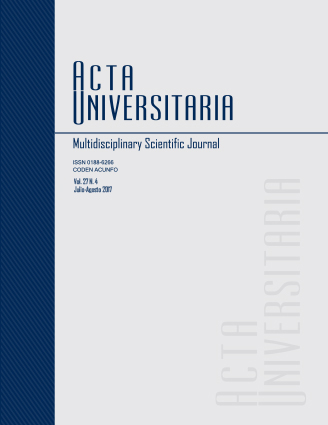Reducción biocatalítica de benzaldehído usando residuos vegetales como fuente de enzima
Publicado 2017-09-20
Palabras clave
- Benzaldehyde,
- benzyl alcohol,
- biocatalytic reduction,
- vegetable waste.
- Benzaldehído,
- alcohol bencílico,
- reducción biocatalítica,
- desechos vegetales no lineales.
Cómo citar
Resumen
Los extractos acuosos de los siguientes residuos vegetales se utilizaron como fuente de enzima y fueron capaces de reducir benzaldehído a alcohol bencílico: semillas de capulín, mamey, pimiento verde, chile y aguacate, vainas de frijol, nabo, haba, alubia y jinicuil, la cáscara de la papaya y la hoja de cebollino. Las conversiones más altas de benzaldehído se obtuvieron con las semillas de capulín y mamey, vainas de frijol y las hojas de cebollino (86%, 77%, 54% y 45% de alcohol bencílico, respectivamente). Las ventajas de la metodología biocatalítica propuesta son: se evita la generación de residuos químicos tóxicos, ya que en la reducción química se utiliza agentes reductores metálicos, los residuos biológicos pueden utilizarse como abono. El procedimiento usa algunos de los principios de química verde.

